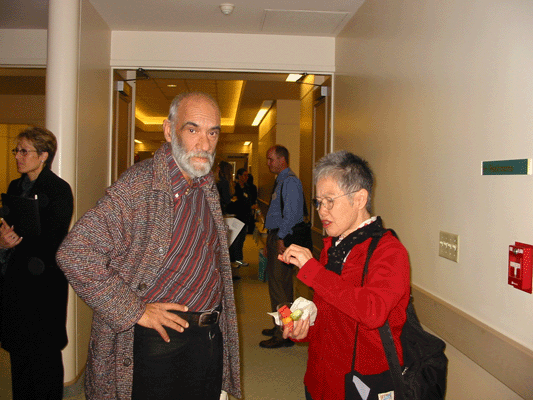Contents
Introduction

Solution-Focused Brief Therapy (SFBT): Techniques, Applications, and Effectiveness
Solution-Focused Brief Therapy (SFBT) is a practical, goal-directed approach to therapy that concentrates on building solutions rather than dissecting problems. The therapy is based on the belief that clients possess the resources and strengths needed to solve their own issues. SFBT focuses on identifying what works well in a client’s life and amplifying those aspects to bring about positive change.
The article offers a comprehensive overview of Solution-Focused Brief Therapy (SFBT), covering its core principles, primary therapeutic techniques, and its application to various psychological issues. It also discusses the criticisms, limitations, and effectiveness of SFBT in fostering positive change, enhancing client strengths, and achieving therapeutic goals in a brief time frame.
What is Solution-Focused Brief Therapy?
Solution-Focused Brief Therapy (SFBT) is a therapeutic approach that emphasizes finding solutions rather than focusing on problems. Developed by Steve de Shazer and Insoo Kim Berg, SFBT is designed to be a brief, goal-oriented therapy that helps clients envision and achieve their desired outcomes. This article provides a comprehensive overview of SFBT, including its foundational concepts, key techniques, applications to psychological conditions, and its effectiveness.
Unlike traditional therapies that might examine into the origins of a problem, SFBT aims to discover practical solutions and foster client self-efficacy. The therapy is designed to be short-term, with the goal of achieving meaningful results in a relatively brief period.
Why Solution-Focused Brief Therapy is Important?
SFBT is significant because it offers a clear, structured approach to achieving client goals by leveraging existing strengths and resources. By focusing on solutions, clients can rapidly identify actionable steps toward their desired outcomes, which can lead to quicker therapeutic progress. This approach is particularly valuable for individuals who are motivated to make changes and are looking for practical, future-oriented solutions.
The brevity and focus of SFBT make it accessible and adaptable to various contexts, including individual therapy, couples therapy, and family therapy. It is effective for clients seeking to address specific issues, set goals, and create actionable plans.
Types of Solution-Focused Brief Therapy Techniques
- Scaling Questions: Clients rate their progress on a scale (e.g., 1 to 10) to visualize progress and set goals. For example, A client with anxiety rates their current level of anxiety and discusses steps to improve, helping them set achievable milestones for reducing their anxiety.
- Miracle Questions: Clients imagine a future where their problems are resolved to help articulate goals. For example, A client with relationship issues visualizes what a perfect relationship would look like and identifies improvements, creating a clear vision of their ideal relationship to work towards.
- Exception Finding: Clients recall times when the problem was less severe to uncover solutions. For example, A client with low self-esteem remembers moments when they felt confident and explores what contributed to those feelings, applying those insights to boost their current self-esteem.
- Strengths and Resources: Clients identify and use their strengths and past successes to address current issues. For example, A client overwhelmed at work reflects on past stress management techniques and applies them to their current situation, leveraging their proven strategies to handle current challenges more effectively.
Understanding How Solution-Focused Brief Therapy Works
SFBT operates on the principle that clients are experts in their own lives and that they have the ability to create solutions to their problems. The therapy emphasizes a collaborative relationship between the therapist and the client, with the therapist guiding the client through a structured process of goal-setting and solution-building. The therapy uses a future-oriented approach, focusing on what clients want to achieve rather than what is wrong. By using techniques like scaling questions, miracle questions, and exception finding, SFBT helps clients to visualize and work towards their goals, fostering a sense of agency and self-efficacy.
This coming section provides a comprehensive look at Solution-Focused Brief Therapy (SFBT), including an overview of its foundational ideas, an in-depth exploration of its core techniques, and an analysis of its effectiveness in treating psychological and relational problems.
Simple Overview
Core Idea: SFBT is a goal-oriented therapy that emphasizes finding practical solutions to specific problems. By focusing on leveraging clients’ existing strengths and resources, it aims to achieve desired outcomes efficiently. The therapy prioritizes solutions over problems, seeking to create positive change in a relatively brief timeframe. This approach fosters a sense of empowerment and directs clients‘ energy toward actionable steps and progress.
Real-Life Example: Consider a person struggling with low motivation at work. In SFBT, the therapist might use scaling questions to gauge the person’s current level of motivation and identify what small, manageable changes could improve it. Additionally, the therapist might employ the miracle question to help the client visualize a future where motivation is high, collaboratively setting clear, practical steps to achieve that envisioned state. This method helps the client stay focused on attainable goals and encourages incremental progress.
Critical Concepts
- Flexible Application: Solution-Focused Brief Therapy (SFBT) is versatile and adaptable, making it effective for a broad spectrum of issues. It can be applied to challenges such as relationship difficulties, workplace stress, personal development, and behavioral changes. The therapy’s adaptability extends across various settings, including individual therapy, couples counseling, and family therapy.
- Building on What Works: The therapy centers on identifying what has worked for the client in the past. This could involve past coping strategies or successes in different areas of life. By amplifying these strengths, clients can apply them to current challenges. This strengths-based perspective not only empowers clients but also provides a solid foundation for crafting effective solutions.
- Future-Focused Dialogue: In Solution-Focused Brief Therapy (SFBT), sessions are structured around discussions that center on clients’ future aspirations and solutions rather than exploring into past problems. This approach encourages clients to articulate their vision of an ideal future, including what their life would look like once their issues are resolved.
Detailed Assessment
- Problem-Focused Approach: Unlike therapies that delve into the origins of problems, SFBT focuses on how to resolve them. This practical approach can lead to quicker results and increased client motivation. By concentrating on actionable steps, clients can efficiently address current issues without getting bogged down by past difficulties, thereby fostering a more dynamic and result-oriented therapeutic process.
- Identifying and Amplifying Successes: By focusing on past successes and exceptions to the problem, SFBT helps clients recognize their capabilities and apply these insights to current challenges. This approach empowers clients by highlighting their previous achievements and strengths, which can be leveraged to overcome ongoing issues. Additionally, it fosters a sense of confidence and self-efficacy, enabling clients to use their proven strategies.
- Collaborative Process: The therapist and client work together as partners, with the therapist facilitating the client’s discovery of solutions. This collaboration enhances client engagement and ownership of the therapeutic process. Additionally, the partnership fosters a supportive environment where clients feel valued and motivated to participate actively.
- Brief and Effective: Solution-Focused Brief Therapy is designed to be short-term, typically lasting 5-10 sessions. Its brevity comes from its strong focus on the present and future, minimizing time spent discussing the past. Clients are encouraged to act on insights quickly, making the therapy more efficient.
Difference Between Solution-Focused Brief Therapy and Theory
| Aspect | Solution-Focused Brief Therapy | Theory |
| Definition | A goal-oriented therapy focusing on finding solutions to problems. | A set of principles or concepts that provides a framework for understanding phenomena or guiding practice. |
| Focus | Practical, solution-based interventions aimed at achieving specific goals. | Broad, abstract concepts intended to explain or predict phenomena, often without immediate practical application. |
| Goals | To help clients identify and achieve practical solutions for their problems. | To provide a general understanding or explanation of concepts, serving as a foundation for further research or practice. |
| Techniques | Scaling questions, miracle questions, exception finding, and strengths-based approaches. | Varied methods depending on the theory, often including conceptual models, hypotheses, and frameworks. |
| Practitioners | Therapists trained in solution-focused techniques. | Researchers or practitioners who use theoretical frameworks to guide their understanding or practice. |
| Application | Applied in therapeutic settings to help clients set and achieve goals. | Theoretical frameworks can be applied across different disciplines to guide research, understanding, or practice. |
| Outcome | Achieved through practical, actionable steps that lead to positive change. | Often includes insights, predictions, or foundational principles that guide further exploration or application. |
Relationship Between Solution-Focused Brief Therapy & Other Therapies
Solution-Focused Brief Therapy (SFBT) intersects with several other therapeutic approaches, each offering unique contributions to the therapeutic process. Cognitive Behavioral Therapy (CBT) and SFBT both emphasize practical, goal-oriented methods, although their techniques diverge in focus. CBT primarily centers on identifying and altering negative thought patterns and behaviors, aiming to break cycles of cognitive distortions, while SFBT zeroes in on actionable solutions and future-oriented goals without delving deeply into past experiences.
Humanistic Therapy shares SFBT’s emphasis on client strengths and potential, with both approaches promoting personal growth and empowerment. However, while SFBT maintains a solution-focused, goal-directed approach that centers on resolving immediate concerns, Humanistic Therapy delves into broader exploration of self-actualization and deeper aspects of the client’s personal experience. Humanistic therapists encourage clients to connect with their inner resources and emotional depth, fostering long-term growth, whereas SFBT is more concerned with pragmatic, short-term solutions.

Notable Figures in Solution-Focused Brief Therapy
- Steve de Shazer: Co-founder of SFBT, Steve de Shazer is renowned for developing core techniques such as the miracle question and scaling questions. His work emphasized practical solutions and leveraging client strengths to drive therapeutic progress.
- Insoo Kim Berg: Co-founder alongside Steve de Shazer, Insoo Kim Berg played a crucial role in shaping the collaborative and solution-focused aspects of SFBT. Her contributions underscored the importance of client participation and goal-setting, enhancing the therapy’s effectiveness.
- Eve Lipchik: A significant figure in SFBT, Eve Lipchik contributed to the development of practical techniques and interventions. Her focus was on how clients can harness their existing resources to achieve their goals, thereby reinforcing the therapy’s practical application.
- Chris Iveson: A key figure in the SFBT community, Chris Iveson has contributed significantly to the practice and training of solution-focused techniques. His work has expanded the application of SFBT in various settings and has emphasized the importance of maintaining a solution-focused perspective throughout therapy.
Theories Influenced by Solution-Focused Brief Therapy
- Narrative Therapy: While primarily focused on re-authoring personal narratives, Narrative Therapy has integrated SFBT’s solution-focused techniques to help clients envision and work towards preferred futures, enhancing the practical application of their new narratives.
- Cognitive Behavioral Therapy (CBT): SFBT’s goal-oriented approach has complemented CBT’s focus on changing thought patterns, integrating practical strategies to help clients achieve specific outcomes, thereby creating a more actionable and measurable path to cognitive change.
- Family Systems Therapy: Family Systems Therapy has integrated SFBT techniques to work with families in a solution-focused manner, emphasizing practical interventions and goal-setting within the family context, which improves collaborative problem-solving among family members.
- Mindfulness-Based Cognitive Therapy (MBCT): MBCT incorporates SFBT’s solution-focused elements to enhance mindfulness practices and goal-setting, supporting clients in achieving a balanced and mindful state, thereby fostering a more practical approach to mindfulness and mental health.
Applications of Solution-Focused Brief Therapy in Treating Mental Health Disorders

Depression
Solution-Focused Brief Therapy can be particularly effective for individuals with depression by shifting the focus away from the pervasive feelings of sadness and hopelessness to moments and activities where the individual has experienced some level of positivity or success.
For example, an SFBT therapist might assist a client in recognizing small but positive changes in their daily routine. This could include setting a goal to engage in a favorite hobby or social activity once a week. The therapist may use scaling questions to help the client assess their mood and motivation levels, guiding them towards achievable, positive steps.
Image Source: .medicalnewstoday.com

Anxiety Disorders
For individuals with anxiety disorders, SFBT helps by focusing on practical, solution-oriented strategies to manage their anxiety. This involves setting clear, achievable goals and developing concrete plans to address specific fears or worries.
Example: An SFBT therapist working with a person who has social anxiety might use scaling questions to assess their current level of anxiety in social situations. The therapist would then help the client establish gradual exposure goals, starting with brief interactions in low-pressure settings and progressively tackling more challenging social scenarios.
Image Source: .magazine.medlineplus.gov

Eating Disorders
In the context of eating disorders, SFBT supports clients by focusing on promoting healthy eating behaviors and positive body image. The therapy helps clients set goals related to their eating habits and self-care practices.
Example: An SFBT therapist might collaborate with a client to set goals for balanced eating, such as planning and preparing nutritious meals or practicing mindful eating techniques. The therapist would also work with the client to identify and leverage their strengths and past successes, encouraging progress towards healthier habits.
Image Source: .recoveryranch.com
Common Myths About Solution-Focused Brief Therapy
| Myth | Clarification |
| SFBT is Only About Quick Fixes | SFBT is focused on practical, achievable solutions but is grounded in understanding client strengths and goals. |
| SFBT Ignores Underlying Issues | SFBT acknowledges underlying issues but prioritizes finding practical solutions to improve current functioning. |
| SFBT is Not Suitable for Complex Problems | SFBT can be effective for complex problems by breaking them down into manageable, solution-focused steps. |
| SFBT is a One-Size-Fits-All Approach | SFBT is tailored to individual clients, focusing on their unique strengths, goals, and circumstances. The therapy adapts its strategies to meet the specific needs of each client, rather than applying a standardized method. |
Criticisms of Solution-Focused Brief Therapy
- Potential for Superficial Solutions: One major criticism of SFBT is its potential to foster superficial solutions, as critics argue that its emphasis on quick, practical results might overlook deeper psychological issues, potentially addressing only surface-level symptoms, and thus may not support long-term stability. This can sometimes result in a treatment that fails to engage with the full complexity of a client’s emotional and psychological landscape.
- Limited Focus on Problem Exploration: SFBT’s emphasis on solutions rather than problem exploration can be seen as a limitation, particularly for clients who might benefit from a more thorough understanding of the origins of their issues to achieve lasting change, which may be crucial for a comprehensive therapeutic outcome. Without this deeper exploration, clients may not fully address the underlying factors contributing to their difficulties.
- Cultural and Contextual Limitations: Another critique is that SFBT may not fully account for cultural and contextual factors influencing clients’ experiences, as its focus on practical solutions might not always align with the cultural values and norms of diverse populations, potentially affecting its overall effectiveness. The therapy’s approach may require adaptation to be culturally sensitive and relevant to different populations.
Conclusion
Solution-Focused Brief Therapy (SFBT) provides a highly practical and goal-oriented approach to psychotherapy, distinguished by its emphasis on finding and implementing solutions rather than delving deeply into problems. This therapy utilizes specific techniques such as scaling questions, miracle questions, and exception finding to help clients achieve significant, meaningful change within a relatively short period. By concentrating on what is already working well in a client’s life and amplifying these strengths, SFBT facilitates the development of actionable steps that lead to positive outcomes.
References
- Berg, I. K., & de Shazer, S. (1993). Goals, goals, goals: A review of solution-focused brief therapy. Norton & Company.
- de Shazer, S. (1985). Keys to solution in brief therapy. Norton & Company.
- de Shazer, S., & Berg, I. K. (1992). The miracle method: A remarkably simple way to improve your life. Norton & Company.
- Lipchik, E. (2002). Beyond technique in solution-focused therapy. Guilford Press.
- Shazer, S., & Dolan, Y. (2007). The solution-focused approach to therapy: A brief introduction. Sage Publications.
- Franklin, C., & Zysk, R. (2001). Solution-focused brief therapy: A review of the outcome research. Journal of Family Therapy, 23(4), 500-516.
- Gingerich, W. J., & Eisengart, S. (2000). Solution-focused brief therapy: A review of the outcome research. Family Process, 39(4), 477-498.
- Kim, J. S. (2008). A meta-analysis of solution-focused brief therapy: An examination of its clinical effectiveness. Journal of Brief Therapy, 8(2), 1-18.
- O’Connell, B., & Palmer, S. (2004). Solution-focused therapy: Theory, research & practice. Sage Publications.
- Rees, C. S., & Mccaul, K. A. (2009). Solution-focused brief therapy: A clinical review. Clinical Psychology Review, 29(5), 399-411.
Explore more Theories & Therapies








